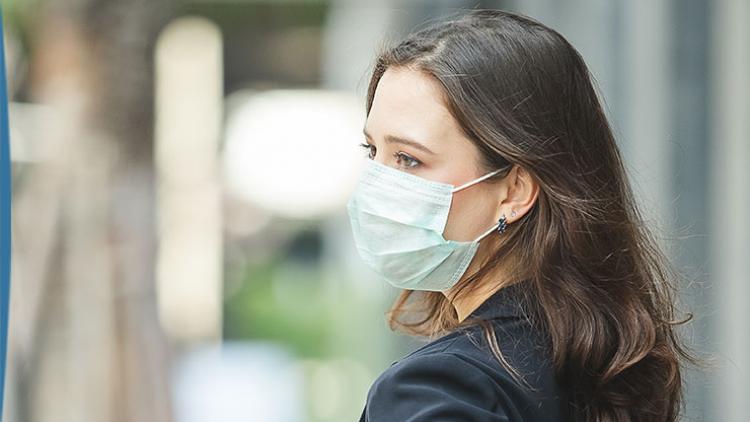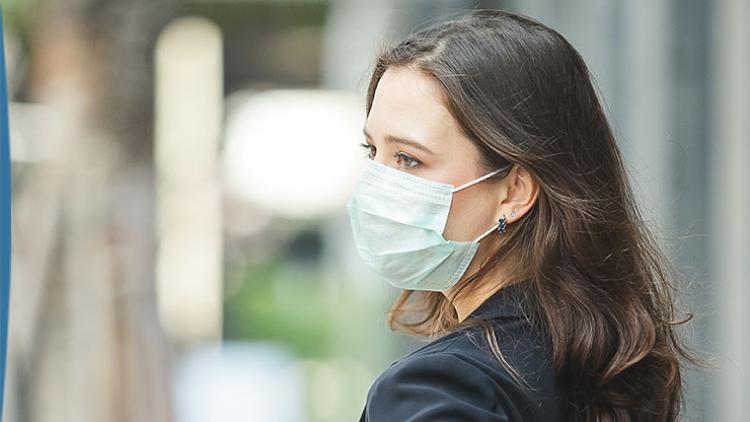COVID-19 MASKS: POTENTIAL SIDE EFFECTS ON YOUR SKIN
During the COVID-19 pandemic masks have become valuable allies and are now an everyday necessity. But how does the skin react to the frequent wearing of a mask?
Wearing a mask is now strongly recommended in public places, on public transport and also throughout the day in some workplaces. It is one of the key measures for protecting yourself and, above all, for limiting the spread of the virus by protecting others. However, many people have been quick to notice that their facial skin reacts badly to wearing a mask on a daily basis.
What skin reactions are associated with wearing a mask?
Aside from the respiratory discomfort they may cause, masks can have some side effects as our facial skin is used to breathing freely and not being enclosed. It is likely to react differently depending on its sensitivity.Frequent wearing of a mask may lead to minor irritations, redness, itching sensations caused by dry skin or small spots. These problems are generally experienced on the areas in contact with the mask: upper cheeks, under the eyes and nose, and behind the ears, which come in contact with the mask's elastic.
It should be noted that these mask-related skin problems are only minor skin irritations and it is strongly recommended that you protect yourself from COVID-19 by wearing a mask.
Our expert Gautier Doat, a Ducray Medical Division doctor, discussed the skin side effects of wearing a mask in an article in Madame Le Figaro. He explains that frequent use of a mask can increase the sensitivity of acne- and seborrheic dermatitis- prone skin. Furthermore, and to make matters worse, the stress of this unsettling, unprecedented period can further contribute to your skin having a hard time.
How can you reduce these mask-related side effects?
Which are the best masks to wear?
Cotton masks are recommended to provide protection against COVID-19, as they cause less irritation to facial skin, which is particularly sensitive and reactive. Whichever type of mask you choose, it is essential that it complies with the protection standards.Masks that are attached at the back of the head are handy alternatives for those who develop irritation behind the ears due to elastic ties.
What care routine should you adopt to limit facial skin reactions?
In order to protect your facial skin and limit any reactions, we recommend that you take special care of your skin while wearing your mask. Please find below some advice on how to adapt your skin care routine during this period.As a first step, an emollient or hydrating cream should be applied morning and evening - 30 minutes or 1 hour before putting on your mask - for maximum absorption. Creams with a light texture are recommended for fabric masks and oily skin while for atopic skin, emollients should be favored.
Sun care products with SPF tend to be greasier and should therefore be avoided on areas covered by your mask. On the other hand, uncovered and sun-exposed skin should be well protected.
As far as make-up is concerned, Dr. Gautier Doat's advice is not to overdo it when wearing a mask and to adapt your make-up removal routine, by using suitable micellar solutions for example. In any event, we recommend you use gentle facial cleansers, such as cleansing oils, soap-free syndets and ultra-rich bars. Gently dab your face dry, and avoid rubbing. Use of an emollient after make-up removal is also recommended.
Finally, masks must be changed every 4 hours, which gives your skin the opportunity to breathe for a few minutes. You might also want to spray some thermal spring water on your face when you change your mask. Remember to let your face dry before putting your mask back on.
Above all, it is important to follow protective measures when changing your mask, to wash your hands before and after, and to only touch the mask's elastic or straps.


